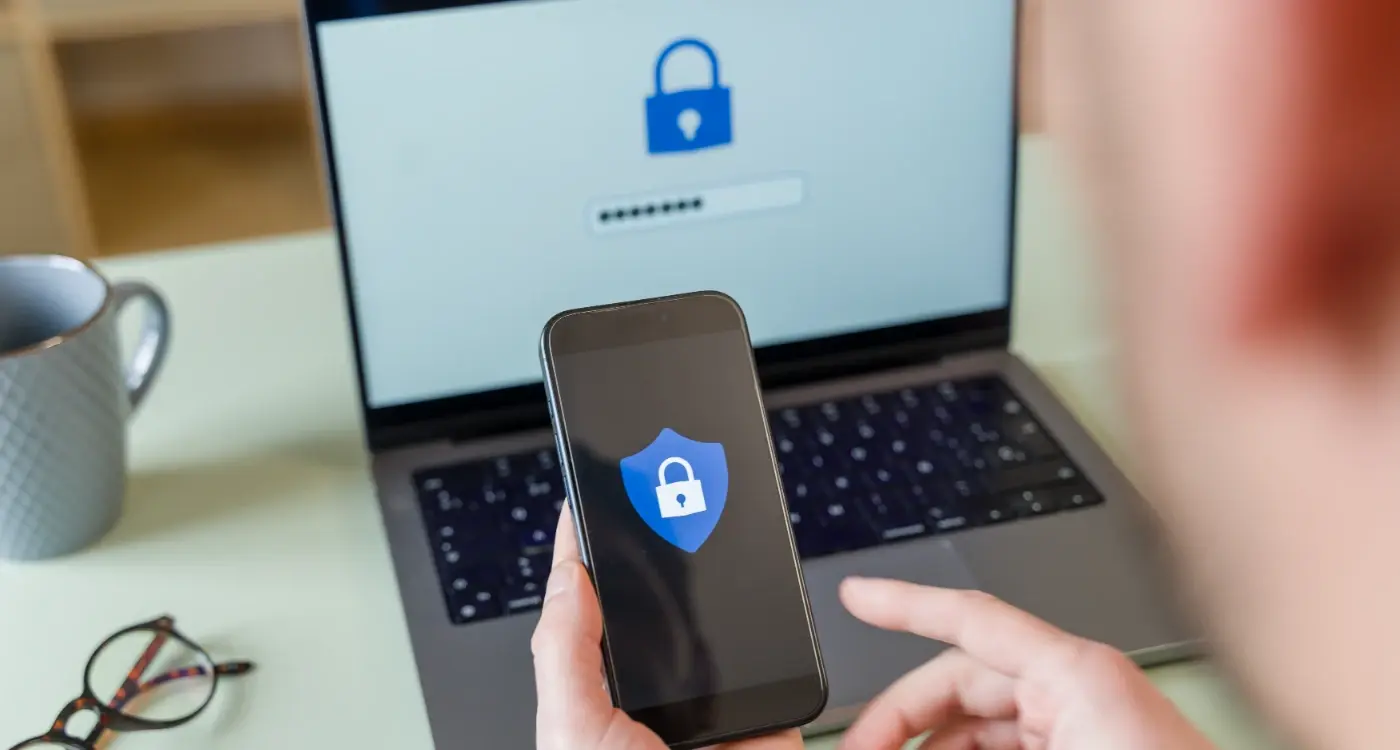How Do You Secure Enterprise App Data During Remote Access?
Remote work has transformed how we access enterprise applications, but it's also opened up a whole new world of security challenges that keep IT teams busy around the clock. When employees connect to company systems from their homes, coffee shops, or airport lounges, they're essentially extending your corporate network into environments you can't control—and that's where things get complicated from a data protection standpoint.
I've spent years helping companies build mobile apps that need to handle sensitive enterprise data, and one thing that never changes is how quickly security threats evolve when remote access enters the picture. What worked for securing data when everyone sat in the same office simply doesn't cut it when your team is scattered across different locations, devices, and networks. The attack surface grows exponentially, and suddenly you're dealing with unsecured Wi-Fi connections, personal devices mixing with work data, and employees who might not fully understand the security implications of their daily habits.
The biggest mistake companies make is treating remote access security as an afterthought rather than building it into their systems from day one
The challenge isn't just technical—it's about balancing security with usability because if your security measures are too cumbersome, people will find ways around them. Remote access security needs to protect your enterprise app data without making it impossible for your team to do their jobs effectively. This means implementing multiple layers of protection that work together: strong authentication systems, proper data encryption, secure network protocols, and comprehensive monitoring that can spot threats before they become breaches.
Understanding Remote Access Vulnerabilities
Remote access creates a whole new set of security challenges that didn't exist when everyone worked from the same office building. When your enterprise app data travels across public networks, gets accessed from personal devices, and passes through home Wi-Fi networks, you're basically expanding your attack surface by hundreds or thousands of times.
The biggest problem I see with remote access isn't the technology itself—it's that most businesses treat it like an afterthought. They set up VPN access, hand out laptops, and assume they're protected. But remote access vulnerabilities go much deeper than just securing the connection between a device and your servers.
Common Attack Vectors in Remote Access
Man-in-the-middle attacks happen when someone intercepts data as it travels between a remote device and your servers. This is particularly common on public Wi-Fi networks where attackers can easily position themselves between users and legitimate access points. Weak authentication systems create another major vulnerability—if someone can guess or steal login credentials, they have the same access as legitimate users.
- Unsecured home networks with default router passwords
- Personal devices that lack proper security controls
- Shadow IT applications that bypass company security policies
- Social engineering attacks targeting remote workers
- Malware infections on unmanaged devices
The Hidden Risks
What many businesses don't realise is that remote access vulnerabilities often compound each other. A weak password might not be a huge problem in a controlled office environment, but combine it with an unsecured home network and an unpatched device, and you've got a serious security incident waiting to happen. The key is understanding that remote access security isn't just about the technology—it's about creating layers of protection that work together.
Authentication and Access Control
Getting authentication right is probably the most important thing you can do to protect your enterprise app data when people are working remotely. I've seen too many companies think that a simple username and password will do the job—it won't. Remote access security demands multiple layers of verification, and honestly, the stakes are too high to mess about with basic setups.
Multi-factor authentication should be your starting point, not your end goal. Yes, it adds an extra step for users, but that small inconvenience is nothing compared to the cost of a data breach. I always recommend combining something users know (passwords) with something they have (mobile devices or hardware tokens) and ideally something they are (biometric data). The beauty of modern smartphones is that they can handle all three authentication factors in one device.
Set up conditional access policies that automatically require stronger authentication when users access sensitive data or connect from unfamiliar locations. This balances security with user experience by only adding friction when the risk level increases.
Role-Based Access Controls
Not everyone in your organisation needs access to everything—that's just common sense. Role-based access control lets you define exactly what each user can see and do within your enterprise applications. The principle of least privilege isn't just a fancy security term; it's your best defence against both external attacks and internal mistakes. When someone's account gets compromised, you want to limit the damage they can do.
Session Management
Remote sessions need constant monitoring and automatic timeouts. I've worked on systems where sessions would stay active indefinitely, which is asking for trouble. Set reasonable timeout periods based on the sensitivity of your data—financial applications might need 15-minute timeouts while general productivity tools could safely run for hours. The key is finding the right balance between security and productivity for your specific use case.
Data Encryption Methods
When it comes to protecting enterprise app data during remote access, encryption is your most reliable defence. I've seen too many companies treat encryption as an afterthought—adding it on at the end of development rather than building it into the foundation of their security strategy. This approach leaves gaps that attackers can exploit, particularly when employees access sensitive data from coffee shops, home networks, or public WiFi.
The two types of encryption you need to understand are encryption in transit and encryption at rest. Data in transit protection covers information moving between devices and servers—think of an employee downloading financial reports from your app whilst working remotely. We implement AES-256 encryption with TLS 1.3 protocols to protect this data flow. Without proper transit encryption, anyone monitoring network traffic can intercept and read sensitive information.
Choosing the Right Encryption Standards
For data at rest—information stored on devices or servers—the approach needs to be more nuanced. Mobile devices can be lost or stolen, making device-level encryption essential. iOS and Android both offer strong encryption by default, but your app should add an extra layer of protection for sensitive business data. We typically implement application-specific encryption keys that are separate from the device's main encryption system.
Key Management Strategies
The weakest link in any encryption system is usually key management. Remote access scenarios make this more complex because keys need to be securely distributed and regularly rotated without disrupting user access. Hardware Security Modules (HSMs) provide the best protection for encryption keys, but they're not always practical for smaller organisations. Cloud-based key management services offer a good middle ground—they provide enterprise-grade security without the infrastructure overhead.
One mistake I see repeatedly is using the same encryption approach for all types of data. Your customer database requires different protection than cached user preferences. High-value data should use stronger encryption methods and more frequent key rotation, even if it means slightly slower performance.
Network Security Protocols
When your team accesses enterprise apps remotely, the network becomes your first line of defence against data breaches. I've seen too many companies assume their existing WiFi setup is enough—it's not. The moment your data travels outside your office network, you need protocols that can handle the unpredictable nature of remote connections.
Virtual Private Networks remain the backbone of secure remote work, but not all VPNs are created equal. Site-to-site VPNs work well for branch offices with predictable traffic patterns, whilst client-to-site VPNs give individual users secure tunnels to your enterprise systems. The choice depends on how your team works and what apps they need to access. Split tunneling can improve performance by routing only business traffic through the VPN, but it introduces security gaps that need careful management.
Zero Trust Network Architecture
Traditional network security assumes everything inside your network is trustworthy—that assumption doesn't work when people access your apps from coffee shops and home offices. Zero Trust flips this model by verifying every connection request, regardless of where it originates. This means checking user credentials, device health, and network location before granting access to any enterprise app or data.
The network perimeter has dissolved, which means we can't rely on castle-and-moat security models when people are working from everywhere except the castle
Software-Defined Perimeters create secure network segments that follow users and devices rather than physical locations. This approach lets you apply consistent security policies whether someone accesses your apps from the office network or their kitchen table. The key is implementing these protocols gradually—switching everything overnight usually creates more problems than it solves.
Device and Endpoint Security
When employees access company apps from their personal devices or company laptops outside the office, each device becomes a potential entry point for attackers. I've seen too many cases where a single compromised device led to major data breaches—and the scary part is that many companies don't realise how exposed they are until it's too late.
The biggest challenge with endpoint security is that you're dealing with devices you don't fully control. Personal phones might have dodgy apps installed, laptops could be running outdated software, and tablets might be shared with family members. That's why mobile device management (MDM) solutions have become so important for enterprise security.
Key Device Protection Measures
A good endpoint security strategy covers multiple layers of protection. Here's what needs to be in place:
- Device enrollment and registration before accessing company data
- Automatic security updates and patch management
- Anti-malware scanning and real-time threat detection
- Screen lock enforcement with strong passcodes or biometrics
- App whitelisting to prevent unauthorised software installation
- Remote wipe capabilities for lost or stolen devices
- Jailbreak and root detection to block compromised devices
One thing that catches many businesses off guard is the need for containerisation. This means creating a secure workspace on the device that keeps company data separate from personal apps and files. If an employee's device gets infected with malware, the containerised work environment remains protected.
Managing BYOD Risks
Bring Your Own Device policies create convenience for employees but headaches for security teams. The key is finding the right balance between security and usability—lock things down too tightly and people will find ways around it that create even bigger risks.
Certificate-based authentication works well here because it ties device access to specific, validated endpoints rather than just usernames and passwords. Combined with regular compliance checks, this approach gives you visibility into which devices are accessing your systems and whether they meet your security standards.
Application-Level Security Controls
When it comes to protecting enterprise app data during remote access, the application layer represents your last line of defence. This is where you can implement controls that work regardless of how users connect to your systems or what devices they're using. I've seen too many companies rely solely on network security and then wonder why they still have data breaches.
The most effective application-level security starts with proper input validation and output encoding. Every piece of data that enters your application needs to be checked, sanitised, and validated before processing. This prevents injection attacks that could compromise your entire database. Session management is equally important—tokens should expire after reasonable periods, and you need to invalidate sessions immediately when users log out or when suspicious activity is detected.
Core Application Security Features
- Multi-factor authentication integrated directly into the app
- Real-time data loss prevention that monitors file transfers
- Application-level encryption for sensitive data fields
- User behaviour analytics to detect unusual access patterns
- Automatic session timeout and re-authentication prompts
- Granular permission controls for different user roles
Role-based access control (RBAC) within your applications lets you define exactly what each user can see and do. A sales representative shouldn't have access to financial records, and temporary contractors shouldn't be able to download customer databases. These controls need to be built into the application logic itself, not just handled at the network level.
Implement application-level logging that records not just who accessed what, but also what they did with the data—this gives you a complete audit trail for compliance and helps identify potential insider threats.
Data tokenisation is another powerful application-level control. Instead of storing actual credit card numbers or personal data, your application can work with tokens that are meaningless if intercepted. The real data stays locked away in a secure vault, accessible only when absolutely necessary.
Monitoring and Threat Detection
Building security layers into your app is only half the battle—you need to know when those defences are being tested or breached. I've seen too many companies invest heavily in security measures only to discover weeks later that attackers had been quietly accessing their systems. Real-time monitoring isn't just about collecting logs; it's about understanding what normal behaviour looks like so you can spot the abnormal.
Most successful monitoring systems I've implemented focus on behavioural patterns rather than just technical alerts. When a user who typically accesses the app from London suddenly logs in from three different countries within an hour, that's a red flag worth investigating. Similarly, if someone's downloading data at ten times their usual rate or accessing parts of the system they've never touched before, your monitoring should flag this immediately.
Setting Up Effective Alert Systems
The biggest mistake I see companies make is creating too many alerts—when everything is flagged as urgent, nothing really is. Your monitoring system should focus on these key indicators:
- Multiple failed login attempts from the same device or IP address
- Unusual data access patterns or large data downloads
- Login attempts from new devices or locations without proper verification
- API calls that don't match normal usage patterns
- Access attempts during unusual hours for that specific user
Response and Investigation
Having great detection means nothing without a clear response plan. When an alert triggers, your team needs to know exactly who does what and how quickly. I always recommend having automated responses for clear-cut violations—like temporarily blocking an account after too many failed login attempts—while routing more complex situations to human analysts who can make nuanced decisions about whether something is genuinely suspicious or just unusual.
Compliance and Policy Management
Getting your compliance framework right isn't just about ticking boxes—it's about creating a security culture that actually protects your business when remote workers access enterprise apps. After years of helping companies navigate everything from GDPR to industry-specific regulations, I've seen how proper policy management can make or break a remote access strategy.
Most businesses make the mistake of treating compliance as a separate concern from their day-to-day security operations. The reality is that your remote access policies need to be living documents that evolve with your threat landscape and regulatory requirements. This means regular audits of who has access to what, when they're accessing it, and how that data moves through your systems.
Building Enforceable Policies
Your remote access policies must be specific enough to be enforceable but flexible enough to support actual work patterns. I always recommend starting with data classification—not all enterprise information needs the same level of protection, and your policies should reflect that reality. Financial records need stricter controls than marketing materials, and your remote access framework should adjust accordingly.
The strongest compliance programme is one that employees can actually follow without compromising their ability to do their jobs effectively
Documentation becomes absolutely critical when you're managing remote access at scale. Every policy change, access grant, and security incident needs to be logged and auditable. This isn't just about satisfying regulators—it's about understanding how your security measures perform in the real world and where you might need to adjust your approach.
Continuous Monitoring and Adjustment
Compliance isn't a set-and-forget operation, particularly when dealing with remote access scenarios that can change rapidly. Regular policy reviews, user access audits, and compliance testing help ensure your security measures remain effective as your business grows and regulations evolve.
Conclusion
Securing enterprise app data during remote access isn't just about ticking compliance boxes—it's about building a security foundation that can adapt as your business grows and threats change. I've seen too many companies treat security as an afterthought, only to face serious breaches that could have been prevented with proper planning from the start.
The security measures we've covered work best when they're layered together. Multi-factor authentication protects your access points; end-to-end encryption safeguards your data in transit and at rest; network security protocols create secure communication channels; device management ensures only trusted endpoints can connect; application-level controls provide granular protection; monitoring systems catch threats early; and compliance frameworks keep everything organised and auditable.
What matters most is understanding that security isn't a one-time setup—it requires ongoing attention and regular updates. The threat landscape changes constantly, and your security approach needs to evolve alongside it. Start with the basics like strong authentication and encryption, then build up your defences systematically rather than trying to implement everything at once.
Remember that your users need to actually work with these security measures daily. If your security setup is too complex or slows down productivity, people will find ways around it—which defeats the entire purpose. The best security solutions are the ones that protect your data while staying largely invisible to your users during their normal workflow.
Focus on getting the fundamentals right first, then expand your security capabilities as your team and budget allow. A well-implemented basic security setup will always outperform a complex system that's poorly maintained or incorrectly configured.
Share this
Subscribe To Our Learning Centre
You May Also Like
These Related Guides

Which Security Protocols Should Enterprise Apps Include?

How Can I Build Bulletproof Enterprise App Security?



